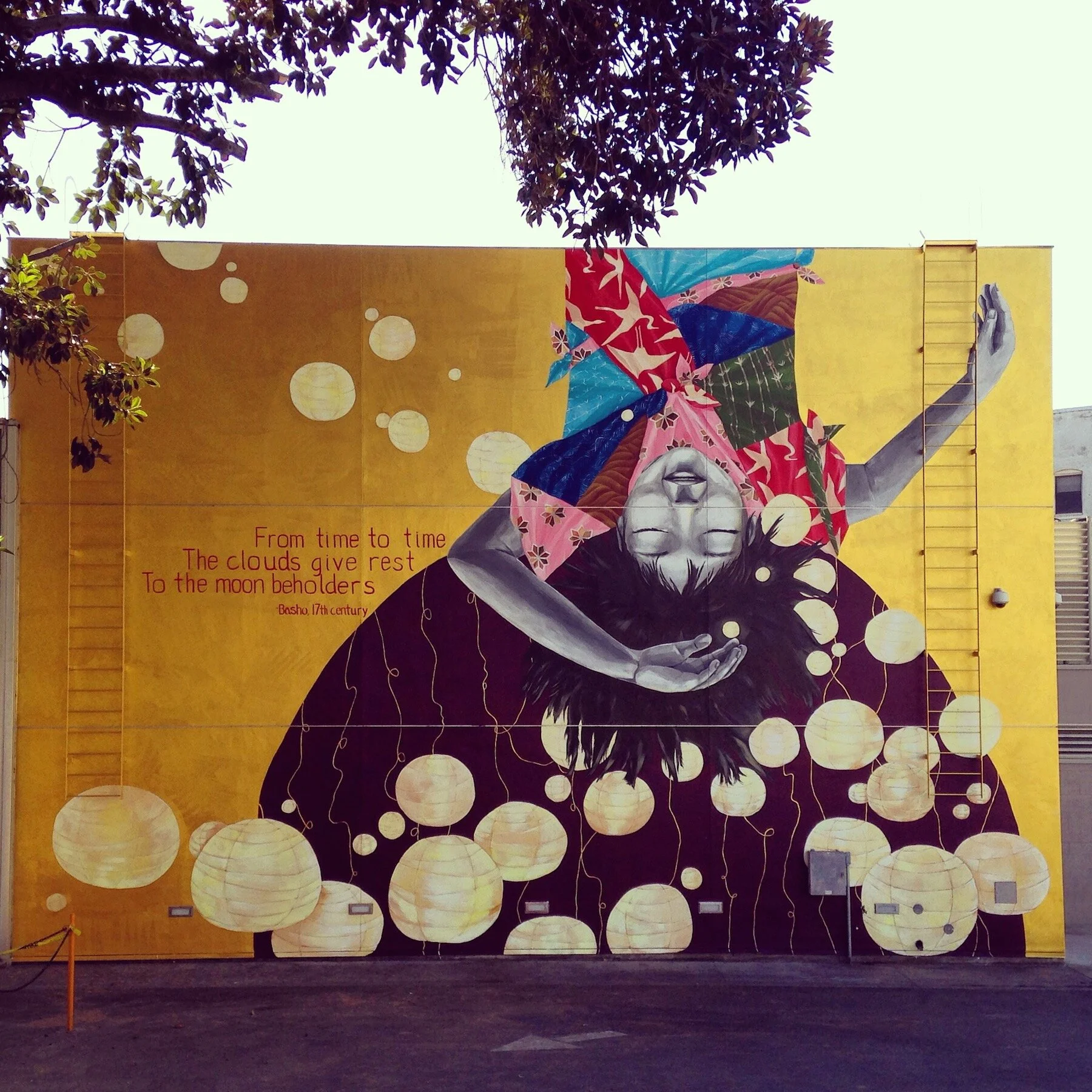Moon Beholders
Japanese American National Museum, Little Tokyo, Los Angeles, California. 2014
To see a short film about the making of Moon Beholders, please click here! Film by Akira Boch, JANM
This image is intended to represent and celebrate, challenge and preserve diverse concepts within Japanese American culture, both contemporary and historic, while connecting with the diverse community around the Japanese American National Museum.
The image shows a young girl, upside-down, resting or playing, depending on the viewer’s perspective. She is clothed in a variety of furoshiki, or traditional Japanese cloths that have long been used to preserve, protect, transport and to gift. Visually, each furoshiki contains imagery specific to different historical moments and ideals of Japanese American culture. The traditional style of tying the furoshiki, connects these themes and stories and binds them to one another.
Pale blue sky covered in barbed wire, symbolic of the JA internment camps of WWII.
Green cloth with bamboo, bamboo is symbolic of resilience because even when it spends a winter bowed down beneath the weight of snow, it always returns to its upright position.
Deep blue ocean waves symbolize the community’s initial migration from Japan to the United States.
Cranes on the red cloth symbolize both longevity and peace.
Brown and golden rows of cornfields symbolize the eastward migration of the JA community into the Midwest and East Coast, with the broadening of the diaspora post WWII.
The pink fabric with geometric flowers composed of diverse skin tones represents the commitment of the Japanese American community to racial and social justice.
The cascading lanterns that surround the central figure’s head represent the idea of akari, or light as illumination- in this case, illuminating the face of the central figure. These lanterns, inspired by Japanese American sculptor Isamu Noguchi, represent the idea of both weightlessness and essence. The floating light symbolizes the essence of a community, the essence of a person. The floating light offers up the question of what we are beyond our material possessions, what we are when we are unbound by our belongings.
The poem, to the left of the central figure reads: “From time to time The clouds give rest To the moon beholders . . “ — Basho (17th Century)
This poem poses multiple translations for the viewer. One, that with the clouds covering the moon, the child is able to rest and dream. The second, suggesting that when the clouds uncover the moon, its beholders are free to experience the moon’s essence and illumination unencumbered.
There is a lot of symbolism to this fairly simple looking, graphic image. My greatest hope is that any viewer, from any walk of life will experience the general themes of this mural in a personal, meaningful way. Some may relate to the connectivity, preservation, and transporting of the furoshiki while others might connect to the illumination, essence and weightlessness expressed in the akari and in the child’s face.
My greatest hope is that the viewer will have the space in this image to become their own moon beholder.










